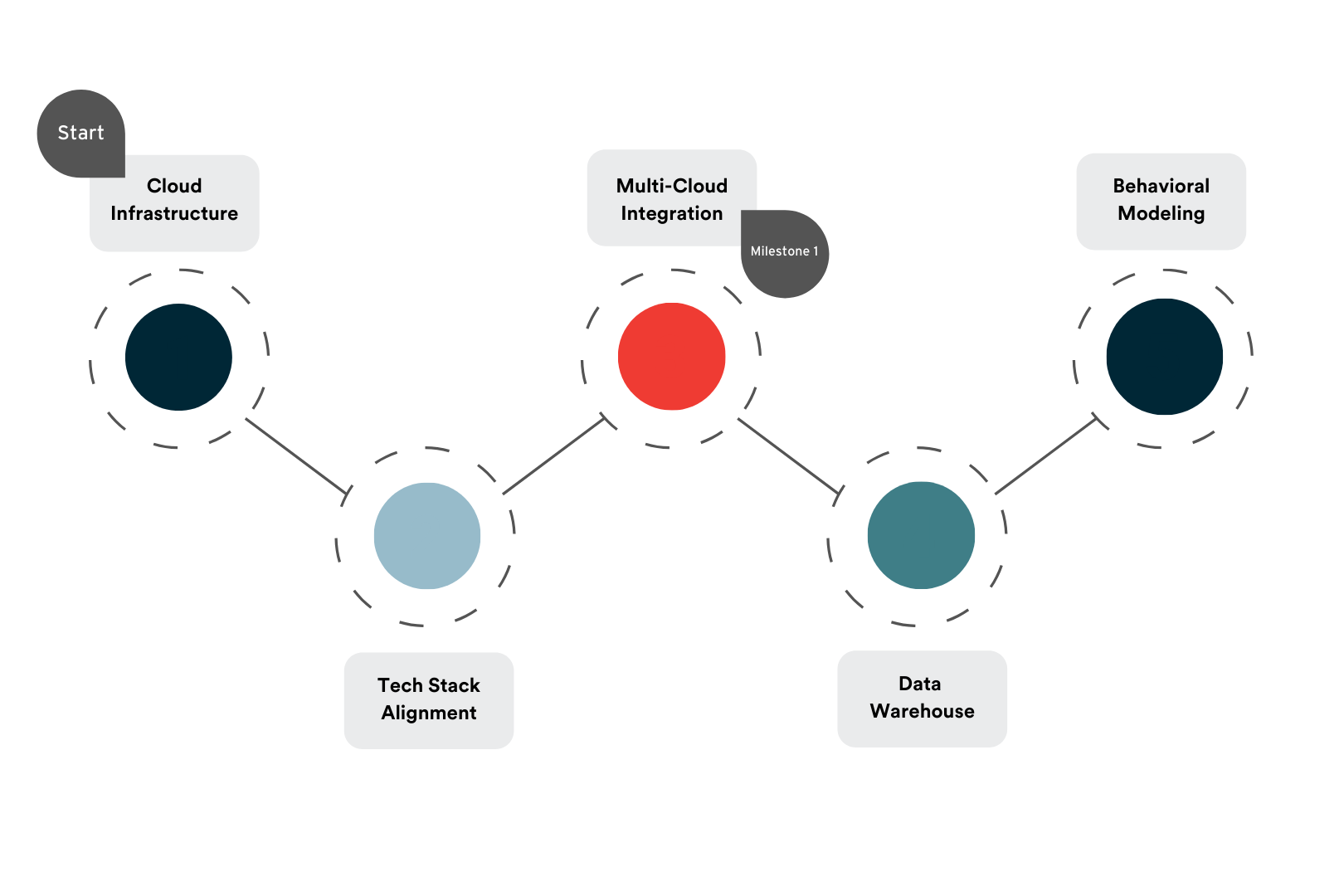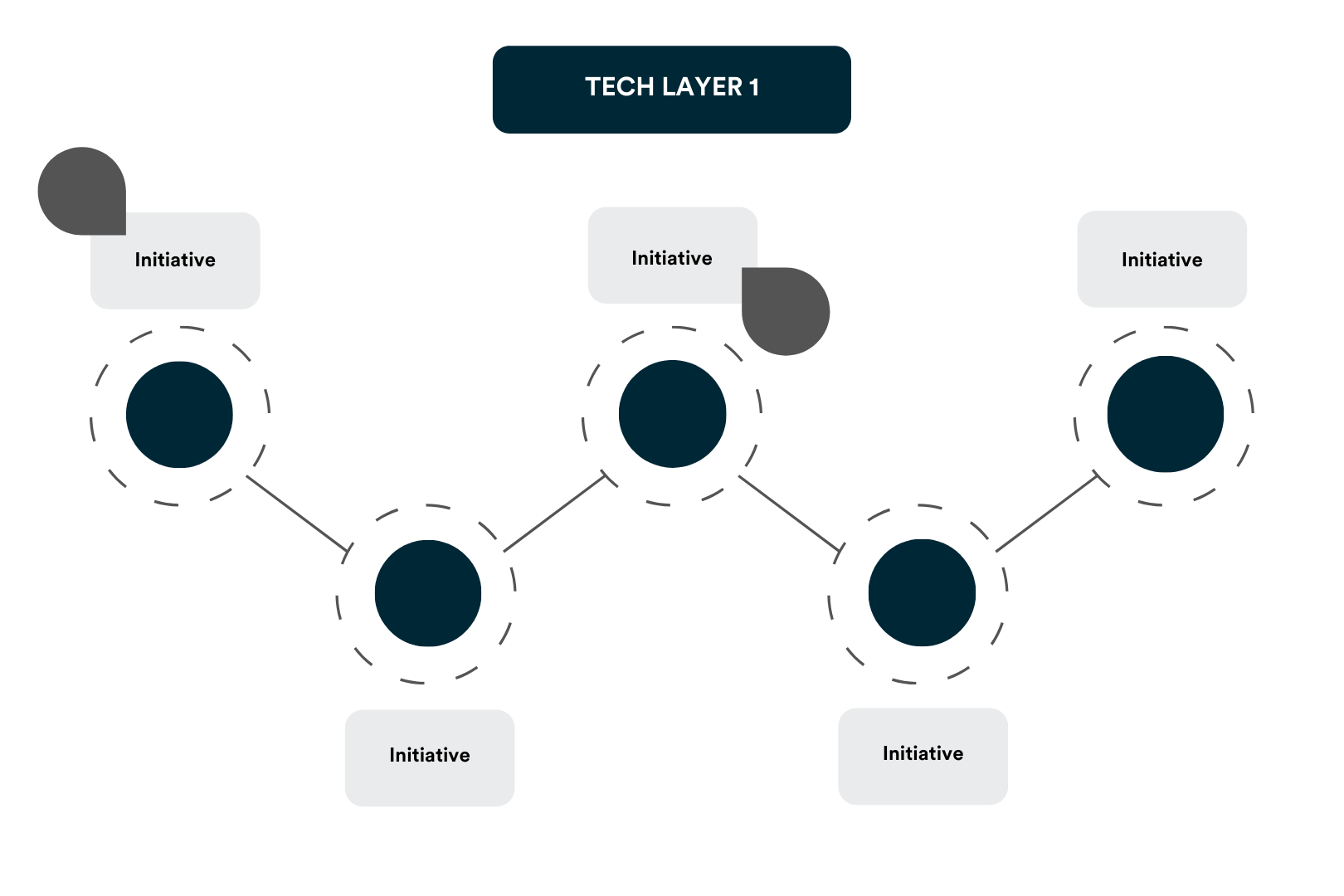software development | agile | product development | product lifecycle
Every new product begins with a vision. It’s an enticing picture: your idea brought to life, delivering value for your users, impacting your industry for the better, and innovating with every iteration.
This vision of the future must begin with a plan to get there: your product roadmap.
In this blog, we’ll share our best example of a product roadmap, including what it should (and shouldn’t) include, ideas for tailoring your roadmap to larger-scale projects and initiatives, and the role of a technology partner in helping you achieve your product vision.
The Difference Between Your Product Vision and Your Product Roadmap
One of the first misconceptions about a product roadmap is that it’s the same as the overall vision of your product. While related, there are a few key distinctions to be aware of.
What is Your Product Vision?
As illustrated above, your product vision is the picture of the future for your product: it’s where you want your product to be in its ideal working state. That doesn’t mean your product is done evolving, but it probably does mean you’re past the stage of creating a minimum viable product.
Think of it this way: if your product idea is a safe and affordable flying car for the masses, your product vision would paint a picture of those details and overall goals.
What is a Product Roadmap?
If your product vision is your sketch for the future, your product roadmap is just what it sounds like: a high-level, strategic map for getting there. Your product vision is included in the product roadmap as an end goal. This drives the work forward, leading the team to a common goal — even as the steps to get there may evolve over the course of an agile development cycle.
The Building Blocks of an Effective Product Roadmap
A lot can go into a product roadmap (and a lot should!), but it’s important to remember that the function of this document is to serve as a strategy, not a sprint plan. It needs to be flexible while still accounting for everything that must get done to achieve your product vision.
We’ve found success by plotting our product roadmaps with the following:
- Overall initiatives
- Milestones
- Goals and metrics
- Desired features and functionality
- Projected timelines
- Status markers
- Technology layers (more on that in a minute!)

You can find numerous examples of what should be in your product roadmap, but above all else, the most important thing to include is business value. It’s imperative that every initiative or milestone documented in your roadmap be tied to a clear and, ideally, measurable business outcome.
The Case for Technology Layers
If you have a large-scale project with multiple dependencies to map out, it’s best to break down the information in the product roadmap by technology layer — for example, with different or sub-roadmaps for areas such as customer experience, automation, data, and more.

By mapping each of these areas separately and combining them in a larger, even more high-level document, you can more easily see dependencies and communicate the interconnectedness of the work. This keeps timelines realistic, ensures the work flows smoothly, and delivers iterative value.
Don't Get Lost in the Woods — Map Your Way to Achieving Your Product Vision
The success of your product vision begins and ends with an effective roadmap. A technology partner who puts your vision first will take the time to learn your business and goals in order to chart a strategic path forward and deliver business value every step of the way.
If you’re ready to build a roadmap to a sustainable solution with a partner who will understand your business from top to bottom, contact us to learn more about how to get started and what doing so could mean for your organization.





